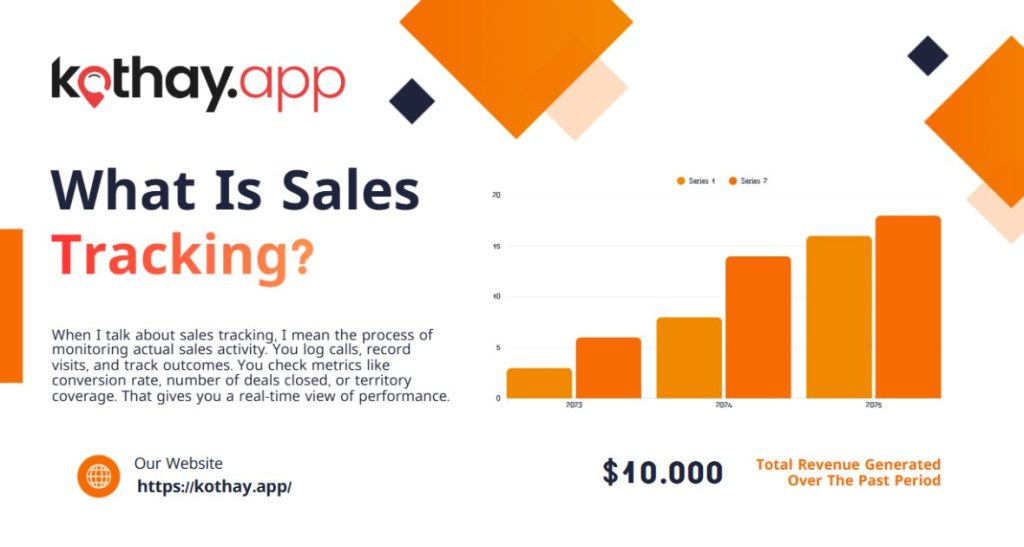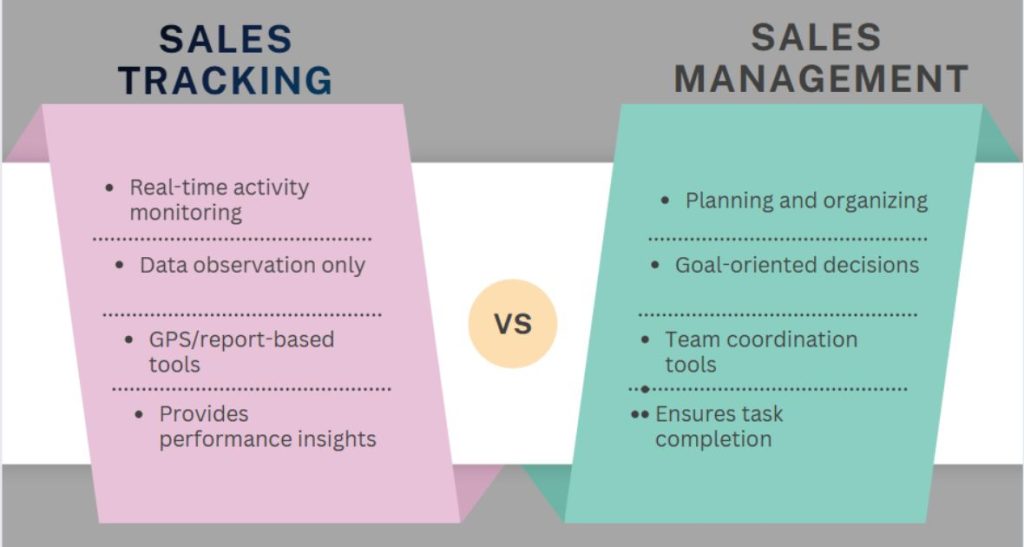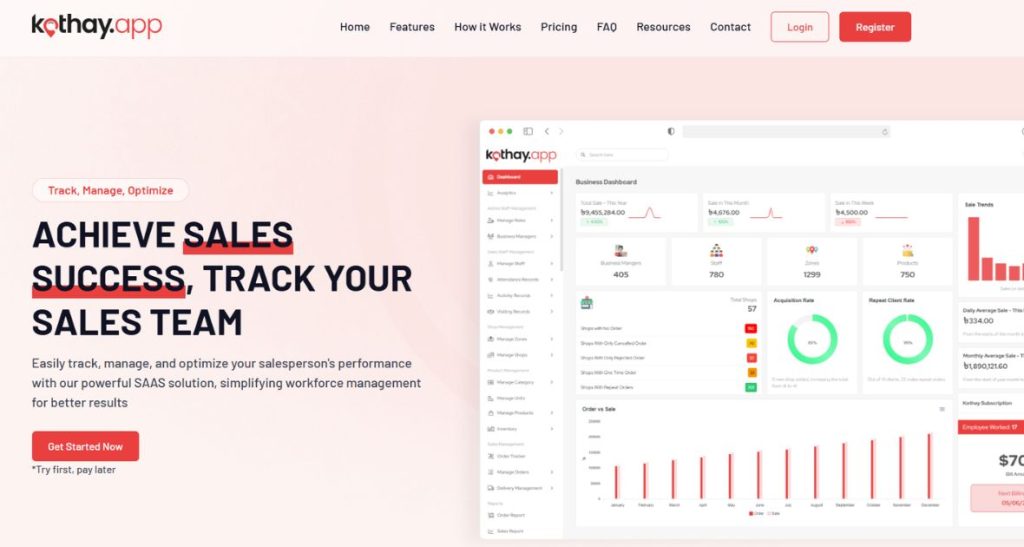How to Be a Good Salesman: 10 Essential Quali
Selling is an art. You need skill, patience, and a genu...

There’s a huge confusion between sales tracking and sales management. Many of us think both concepts are the same. However, each of the systems serves different purposes.
So, let’s show you how these systems work in real life and how they fulfill each other. You can understand which measures to take for your sales team from this discussion.
Let’s start.

When I talk about sales tracking, I mean the process of monitoring actual sales activity. You log calls, record visits, and track outcomes. You check metrics like conversion rate, number of deals closed, or territory coverage. That gives you a real-time view of performance.
Sales tracking software captures that data. It shows which reps perform well, where delays occur, and where opportunities slip. Without tracking, you often rely on guesswork or delayed reports.
You can use sales rep tracking to follow each person’s activity. It helps you identify gaps, optimize routes, or adjust targets.

Sales management refers to the strategy, planning, and oversight of your sales function. You set targets, allocate territories, define sales process stages, and manage your team structure. You coach reps, forecast revenue, and enforce policy. The aim is to guide your sales force toward goals.
Sales management software can have dashboards, tools for sales forecasting, lead routing, and workflow automation. The whole system lets you optimize your team’s contribution. Manual work becomes less and improves consistency.
Companies use a sales management system to direct the business’s future towards their goals.

Now, let’s talk about the differences.
Sales tracking is a tactical job where you record daily activities like calls, meetings, pipeline stages, shops visited, etc. Whereas management depends on strategic parameters like quotas, allocation, forecast, and coaching.
Second, you can use sales tracking software without full management features. But real management needs tracking data. Without tracking, management lacks visibility.
Third, tracking gives you insight into what your reps do. Management gives you the power to change what they do. For example, reassign leads, adjust territories, or set performance goals.
You should consider sales tracking when you need visibility into current performance. If your team works remotely or in the field, you want to see what agents do each day.
You need sales management when you coordinate multiple reps or regions. When forecasting revenue and scaling the team. When you want to coach reps based on patterns over time.
Often, you need both. You start with tracking, gather data, and then layer management on top. You move from simple logs to planning and resource allocation.
If you are a small team, you might lean more toward tracking first. As you scale, you’ll add management functions.

With Kothay, you can track individual rep activity. It shows you when and where reps visit clients, call logs, meeting history, and conversion metrics. That covers sales rep tracking well.
At the same time, Kothay offers tools for sales management. You can assign sales regions, set targets per rep or territory, forecast revenue based on current trends, and monitor team performance over time.
Kothay stores live data. When you review reports, you see both activity (tracking) and outcomes (management). That dual function helps you react quickly and plan ahead.
If you compare Kothay to generic CRM or sales software, its advantage lies in its field-sales focus. It’s built for teams that move around, tracking routes, visits, and live updates, while giving you control through management dashboards.

You should ask yourself these questions:
If you answer yes to the first, start with sales tracking. If you answer yes to the second or third, implement sales management, or use a tool that handles both.
Kothay gives you both in one platform. You don’t need to pick one over the other in many cases. But if you must decide now, tracking is your foundation; management is how you improve.
What is sales tracking?
Sales tracking means monitoring or recording activities like calls, visits, pipeline movements, and conversion rates. The system is mainly for on-field sales reps.
How does sales management differ from sales tracking?
Sales management is mainly about strategies like setting a budget, predicting revenue, assigning duties, and optimizing team performance. But tracking only records the activities.
Do I need both sales tracking software and sales management software?
It depends on your business requirement. If you need to manage the whole sales team and monitor the activities, you need those two systems altogether.
Can small businesses use sales management, or is it only for large teams?
A small team can benefit from management features too. Even solo or few-person teams need targets, performance reviews, and forecasting to grow.
What features should I check in a sales tracking/management tool?
Look for live activity logging, rep performance dashboards, territory assignment, goal targets, forecasting tools, and mobile access for field agents.
Now you see the difference between sales tracking and sales management. You understand that tracking captures what reps do. Management shapes what they do.
If you want to grow your team, you need both layers. A tool that handles tracking and management gives you visibility and control.
Kothay combines these functions and suits teams who want to manage field sales and improve outcomes. Try our platform and see how it works in your market.